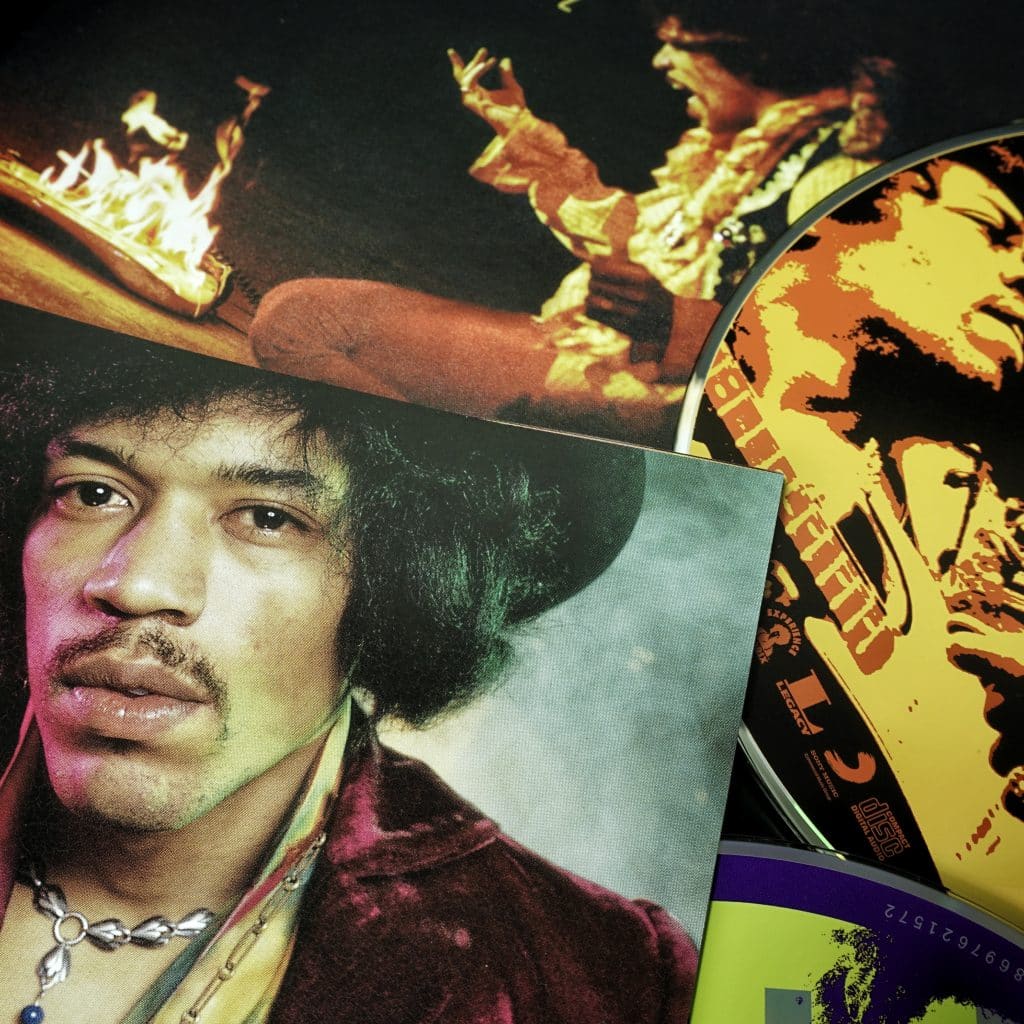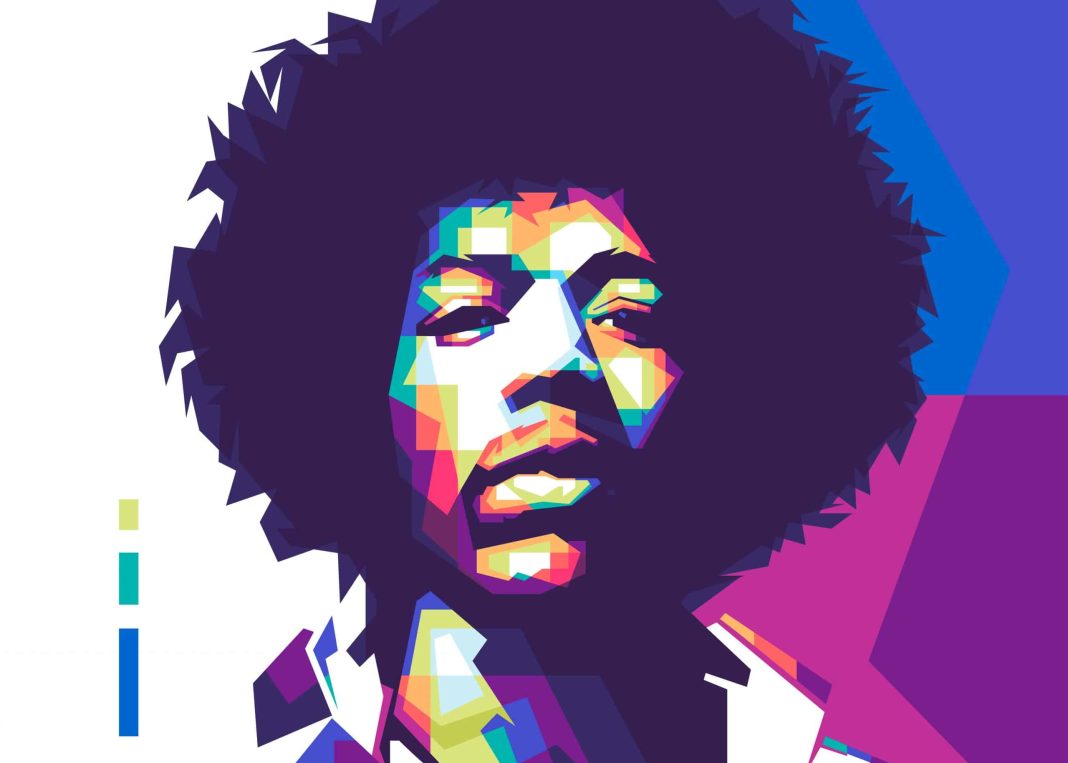Jimi Hendrix is widely regarded as one of the greatest musicians of all time, with his pioneering approach to the guitar and his unique sound that blended rock, blues, and psychedelia. Few figures represent 1960s America more than he. However, throughout his life and career, Hendrix also had a well-documented history of drug use, which has led to ongoing discussions and debates among fans and scholars about the role that drugs played in his music and his legacy.
When Hendrix – perhaps the best guitarist of all time – died in 1970, many worried about his relationship with substances. But what is the truth? And why does it matter? Let’s find out.
The 1960s in America
The 1960s is now seen as one of the most important decades in the last 100 years. A time where civil liberties were fought for, and ‘times they were a changing’. From the ashes of this unrest came a counterculture of young people who wanted peace and love. After years of war and injustice, the new generation believed that there was another way of existence. The 60s truly was a period of significant social, cultural, and political change. Some of the key events and movements that defined the decade include:
Civil Rights Movement
The Civil Rights Movement of the 1960s was a fight for equal rights and opportunities for African Americans. It was marked by protests, marches, and acts of civil disobedience, such as the Montgomery Bus Boycott, the March on Washington, and the Selma to Montgomery marches.
Vietnam War
The Vietnam War, which began in the 1950s, continued into the 1960s. It was a divisive issue, and protests against the war grew increasingly violent as the decade progressed. Less and less people could understand the point in the feud, and this became clearer and clearer as time went on.
Assassinations
The decade saw the assassinations of several prominent figures, including President John F. Kennedy, civil rights leader Martin Luther King Jr., and Senator Robert F. Kennedy. This brought about more unrest, as key political figures were murdered.
Music & Drugs
Music and drugs were at the forefront of a peaceful and loving counterculture. The likes of Dylan, Hendrix, the Beatles – all would sing to huge crowds of people (like Woodstock) and promote equality. Alongside this came love for cannabis and new-found love for acid. LSD, having been first discovered by Albert Hoffman in 1938 in Switzerland, had been introduced to the USA. Its mind-opening properties and cause of ego death became a symbol of the 1960s counterculture. Hendrix would have no doubt tried it himself.
Jimi Hendrix
Jimi Hendrix is widely regarded as one of the most influential and innovative guitarists in the history of rock music. Born in Seattle, Washington in 1942, Hendrix began his musical career in the early 1960s, playing with a variety of bands and working as a session musician before embarking on a solo career that would change the course of music forever. Hendrix’s unique approach to the guitar, which combined elements of blues, rock, and psychedelic music, was unlike anything that had been heard before.
He was known for his virtuosic playing style, which included techniques like feedback, distortion, and wah-wah effects, and his ability to create complex, layered soundscapes with just a guitar, a few pedals, and an amplifier. In other words, he was a genius. Despite his relatively short career (Hendrix died in 1970 at the age of 27), he truly left a mark on the music world, influencing countless musicians and inspiring a generation of guitar players to push the boundaries of what was possible with the instrument.
Early Career
Hendrix was born Johnny Allen Hendrix, but his father later changed his name to James Marshall Hendrix in honour of his late brother. From a young age, Hendrix showed an interest in music, often listening to his father’s records and tinkering with his own homemade instruments. As a teenager, Hendrix began playing guitar in various bands around Seattle. In 1961, he enlisted in the US Army and was stationed in Fort Campbell, Kentucky, where he continued to play guitar in his spare time.
After leaving the Army in 1962, Hendrix moved to Nashville, Tennessee, where he began working as a session musician, playing on recordings for artists like Little Richard and the Isley Brothers. However, he quickly grew frustrated with the limitations of session work and decided to try out on his own. In 1966, Hendrix moved to New York City and formed the Jimi Hendrix Experience.
Rise to Fame
Hendrix’s breakthrough came in 1967 with the release of his debut album, “Are You Experienced?,” which featured hit singles like “Hey Joe” and “Purple Haze.” The album was a critical and commercial success, catapulting Hendrix to stardom and establishing him as one of the most innovative musicians of his generation. You could see, especially with this album, that Hendrix was inspired by the world of drugs. Purple Haze is usually known as a strain of cannabis. In addition, Song Facts writes:
Thanks for being here. We provide email updates via the Cannadelics Weekly Newsletter, which also comes full of top notch deals on products like cannabis buds, vapes and related equipment, edibles, smoking devices, cannabinoid compounds, and a whole bunch more. Getting stoned is fun. Do so responsibly!
“The question “Are you experienced” was commonly interpreted as Hendrix asking if you have experienced drugs. He said that this song was not necessarily about drugs, but about being at peace with yourself. Guitar, bass and drums were all played backward as part of the effects.”
It was evident from the aesthetic of Hendrix and his music that psychedelics meant something to him. Over the next few years, Hendrix released a string of classic albums and continued to tour extensively around the world. Hendrix was known for his flamboyant stage presence, often setting his guitar on fire or smashing it at the end of a performance. He also became an icon of the counterculture movement, with his wild hair, colourful clothing, and psychedelic vibes.
Hendrix & Drugs
There is no doubt that Hendrix used drugs throughout his career, and in many ways, his drug use is an essential part of his story. From his early days as a struggling musician in New York City to his meteoric rise to fame in the late 1960s, Hendrix was known to experiment with a wide range of substances, including marijuana, LSD, cocaine, and heroin.

One of the most significant factors that contributed to Hendrix’s drug use was the culture of the time, as we’ve established. LSD and other substances were almost like a gateway to seeing in a different way; being against the establishment. Additionally, the music industry at the time was rife with drug use, with many musicians using drugs as a way to cope with the stress and pressures of touring, recording, and performing.
Personal Interest
However, Hendrix’s drug use was not just a product of his environment. According to those who knew him best, Hendrix had a deep personal interest in altered states of consciousness and was always searching for ways to push the boundaries of his mind and his music. In interviews and quotes, Hendrix often talked about the importance of drugs in his creative process, stating that they helped him to see things in a new way and allowed him to access parts of his imagination that he could not otherwise reach. Fuel Rocks writes:
“One of the most interesting aspects of Hendrix’s life was his use of hallucinogenic drugs, particularly LSD, which he used to fuel his creativity and artistic output. In fact, some have speculated that it was his use of psychedelic drugs that helped him become the musical genius he was.”
Some argue that Hendrix’s drug use was a destructive force that contributed to his untimely death in 1970, while others see it as an essential part of his artistic vision and creativity.
One of the most commonly cited pieces of evidence in the debate over Hendrix’s drug use is the fact that he was arrested multiple times for drug possession throughout his career. In 1969, Hendrix was arrested for heroin possession in Toronto, which led to him being detained for several days and nearly missing a crucial performance at Woodstock. Additionally, Hendrix was known to frequently smoke marijuana and drop acid, both of which were illegal at the time. In songs like “Purple Haze,” “Hey Joe,” and “Voodoo Chile,” Hendrix makes numerous references to drugs, including LSD, marijuana, and heroin.
Hendrix’s Death
Hendrix died from a Barbiturate overdose in 1970, after suffocating on his own vomit. He was the age of 27, which meant he joined a star studded club of other talents who have unfortunately passed at this same age. It’s hard to know whether these sleeping pills were part of a bigger substance problem in Hendrix’s life, but nonetheless, they were the main cause of his passing.
Hendrix was evidently very young, and would have surely continued to create legendary music had he still been alive later in his life. To blame a culture of drugs on the death of so many great individuals is to avoid the main issue. Fame will always be a killer, as it’s something no one can truly prepare for. From the outside, it looks like the most amazing and social thing ever. But from the inside, can you ever feel more alone? Hendrix used substances to help him see differently, just like the Beatles did with their White Album.
Conclusion
Jimi Hendrix will be forever remembered as one of the greatest musicians of all time. Sadly, he was taken from us far too young, but this will not tamper his legacy. Despite these clear indicators of Hendrix’s drug use, there are still those who argue that it was not as significant a factor in his life and music as some might believe. For example, some suggest that Hendrix’s drug use was simply a way for him to escape from the pressures of his career and that it did not have a significant impact on his creative output.
Others argue that Hendrix was able to use drugs in a positive way, harnessing their effects to fuel his creative process and produce some of his most innovative and groundbreaking music. Nonetheless, for me, Hendrix was yet another genius musician who enjoyed experimenting with substances like any other. But his main love was music, and that will never be argued against.
Thanks for joining us! Welcome to Cannadelics.com; where we work daily to bring you the very best in cannabis and psychedelics news reporting. Head our way frequently to stay in-the-loop, and sign up for the Cannadelics Weekly Newsletter, so you’re never late to get a story.





